Horror has long been a genre that has been used to discuss the ways society has behaved throughout history. People from every culture around the world have their own stories that tell of the horrific acts humans have enacted on one another since the dawn of man. Film writers and directors often use movies to bring the cautionary tales to the screen, hoping that viewers can learn from the mistakes of the past. During the 2020 San Diego Comic-Con at Home, Antlers writer and director Scott Cooper and producer Guillermo del Toro spoke with Scott Weintraub about their hope that audiences take what their film has to say about America’s history, and present, to heart.
Before getting into the discussion about Antlers and their process of filmmaking, del Toro and Cooper shared what TV shows they would like to guest-direct and write on. For del Toro it would be The Night Gallery, Night Stalker, Don’t Be Afraid of The Dark, or any shows from the time when he was a child, during what he termed as the “golden era” of television. Being the legend of horror that he is, it’s no surprise that Frankenstein and The Creature From The Black Lagoon are two of his favorite films, but also Inside Llewellyn Davis and Catch Me If You Can.
While it may be too obvious, for Cooper, The Godfather trilogy and Jaws were the films he saw the most as a youth, and they are what inspired him, as well as another Francis Ford Coppola film, The Conversation.
As they began to get into their process, both Cooper and del Toro stated the importance of regularly watching films on an almost daily basis (especially during this time where being in quarantine is necessary). Cooper stressed that with everything happening, valuing the time we have is important, and in deciding on whether or not to make a film, a director should make sure they really want to do it:
“It makes you realize what’s important, and if anything, it really makes you think about how important time is, and if you’re going to make a film, you better really want to make it.”
Del Toro talked about how this time provides the opportunity to study how different directors make their films.
“If you study film. if you really study a filmmaker you admire, you can then actually break down their use of the lens, their use of composition…depth of field…anything you want. Movement of the camera. Movement of the actors. Anything you want. And if you put the time, then that’s a new tool in your tool box. You do it differently, but as a tool.”
Getting into Antlers, Cooper explained how the film is an allegory for it what being in American means for the people who live there in the present societal and political climate:
“The film looks at the heart of what it means to be an individual in America today, and all of the crises we’re facing, quite frankly. Climate crisis. Drug addicted populace. Our treatment of Native Americans. Abject poverty, all those sorts of things, without hopefully, feeling like a message film, but wrapped into a monster film.”
Antlers is Cooper’s first foray into the supernatural genre, and as a filmmaker he’s on unfamiliar ground but the risk in stepping into the unknown if one of “the great pleasures of making art.”
“I think horror films are for people who are interested in the darkness inside themselves, who don’t want to face it, or confront it directly, and I think it can provide a kind of environment for people to escape.”
Cooper’s goal for the film isn’t for it to be a “message movie”, but one that gives lessons in a subtle way.
“I’m not a fan of message movies. My hope is that when people…if they happen to see my films more than once, they’ll see that there’s something very subtle that will come to the fore that maybe you missed for the first time. And with this particular film, while I wanted it to be quite horrific and terrifying, and I think certainly at moments that it is…I wanted us to really feel like what it is to be an American today and also to show the world as it really is.”
“The Windigo figures into the story, and the Windigo we know is this murderous spirit that’s summoned by nature to seek vengeance on a callous mankind that has abused it, and it’s clear that we’re abusing mother earth. As I mentioned, we’re abusing Native Americans, we have since we came to the shores of America, and then also abusing drugs in the opioid crisis.
So that really just kind of hovers underneath the surface because the Windigo represents greed, and colonialism.”
Del Toro remarked that it was the insatiable hunger, and weakening of the Windigo when it feeds, that was compelling to him about the myth. He drew parallels to the anger and rage felt by the characters, and expressed his admiration for how Cooper wrote that rage, and how he’s proud to be working on the film with Cooper because of it.
With a plot that features a monster inspired by the Windigo, Cooper wanted to make sure the depiction of it was done respectfully because of it’s importance to the Native American and First Nations people of North America, and to do that he consulted Native American filmmaker Chris Eyre, who’s of the Cheyenne and Arapaho Tribes, and Grace Dillon, who is a professor of indigenous studies at Portland State University.
“If we go back one film before this, Hostiles, the western that I made with Christian Bale, it was really important for me as someone who’s a white, Angle Saxon Protestant, Episcopalian raised…if I’m going to discuss and Native American folklore and the themes that course through Native American life, I want to have people who know much more about it than I, and I want to get it right.”
Cooper and del Toro went on to briefly discuss how their idea for how the Windigo would look, was brought to life by designers. del Toro explained that there were very specific characteristics from folklore that had to be adhered to.
“The Windigo has very, very specific cues you have to follow in the way it’s described. You have to follow those precepts. So, the antlers for example are a must, you know. I remember very clearly when I was working with Scott and Guy Davis, and later with everybody at Legacy creating the creature, I said we have to remember we’re not creating a monster, we’re creating a god. So the design needs to have elements that are completely unnatural. That are almost surreal, or abstract.”
For Cooper it was a learning experiencing as he had never worked on a project where creature design was such a large and important part of the process.
“Concept artist Guy Davis, who works with Guillermo quite closely,he would sketch concepts and…continual refinement from Guillermo and me, and Guillermo thought on a much, much deeper level, which is if we’re talking about what this murderous spirit is doing to the earth, it comes from the center of the earth. It’s crust. It’s ore, it’s ember. And the Windigo looks like that. It’s an incredibly beautiful design.”
As the Q&A drew to a close Cooper and del Toro shared how they went through casting, shooting with multiple cameras and visualizing what the camera sees, while writing scripts. Based on what was said and shown in the trailer, Antlers sounds and looks to be a deeply thought provoking film, that will scare viewers in more than one way.
Check out the trailer for Antlers below. The film is due out in February 2021.
Miss any of our other SDCC 2020 coverage? Click here for much more!


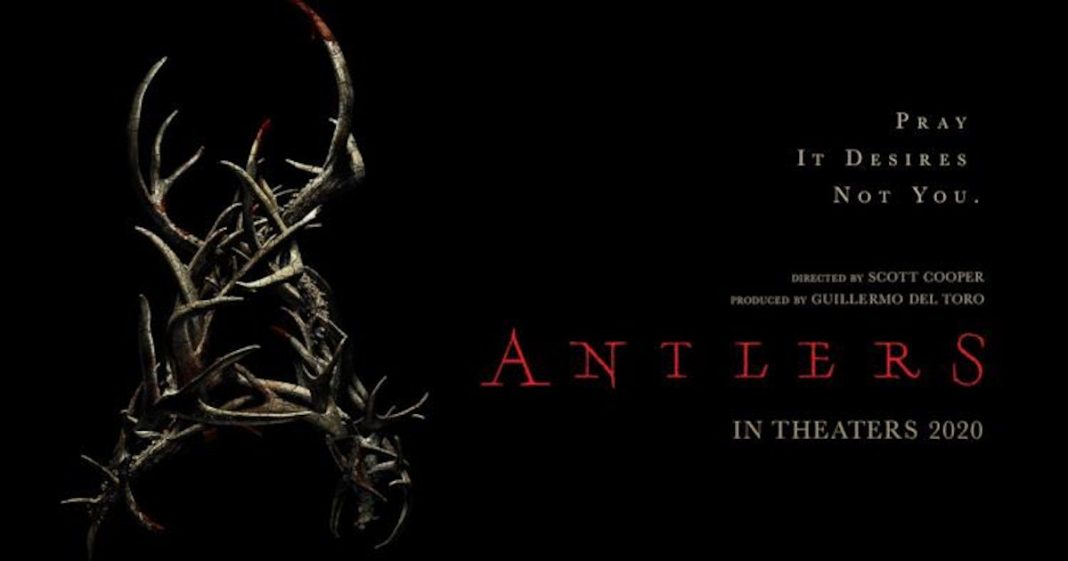
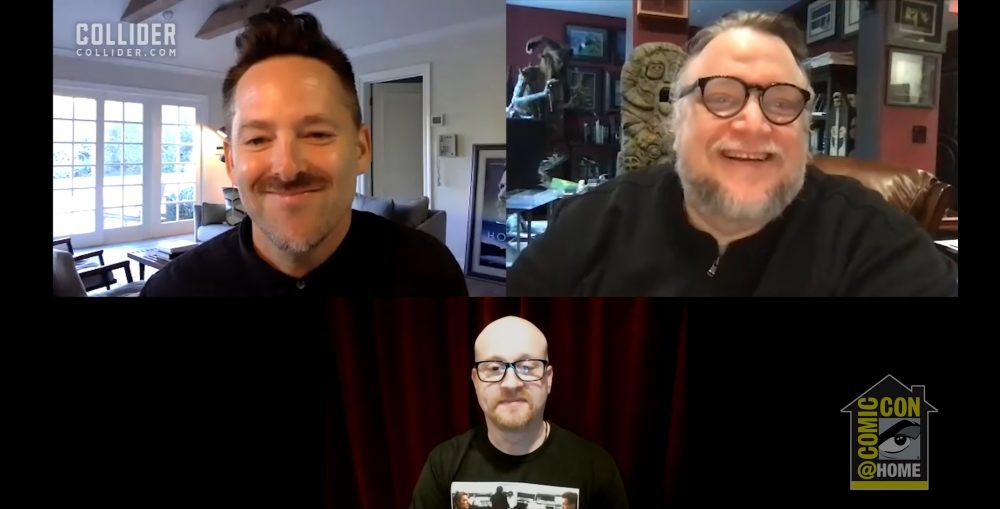
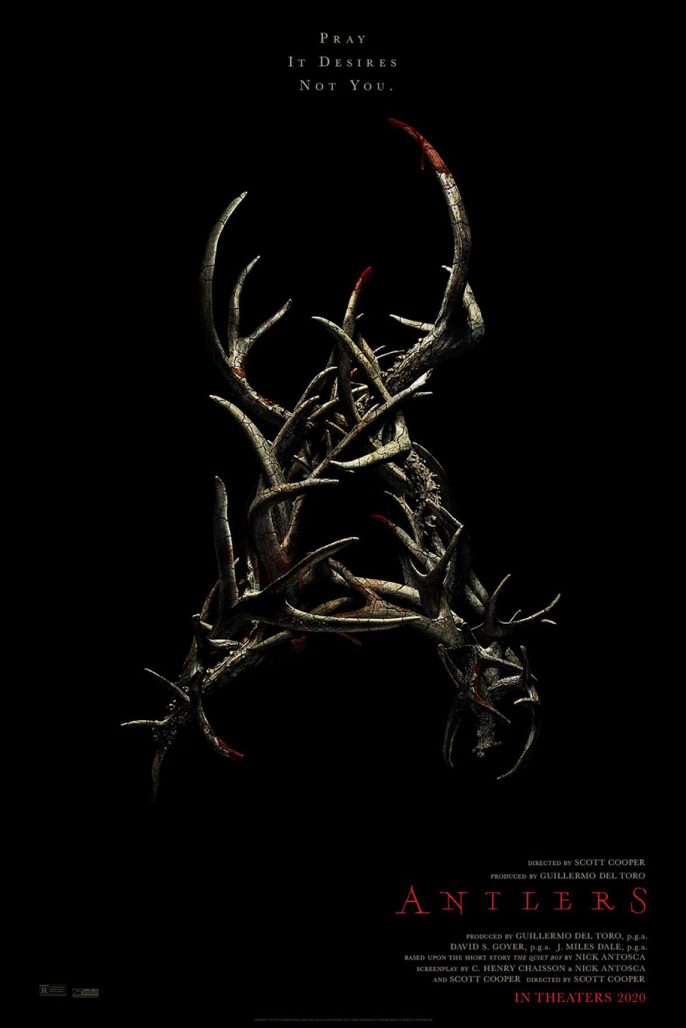
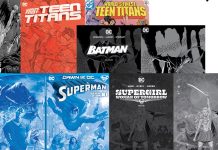

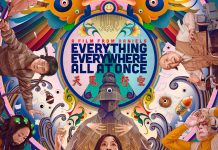



The short story is rather spectacularly creepy.
Comments are closed.